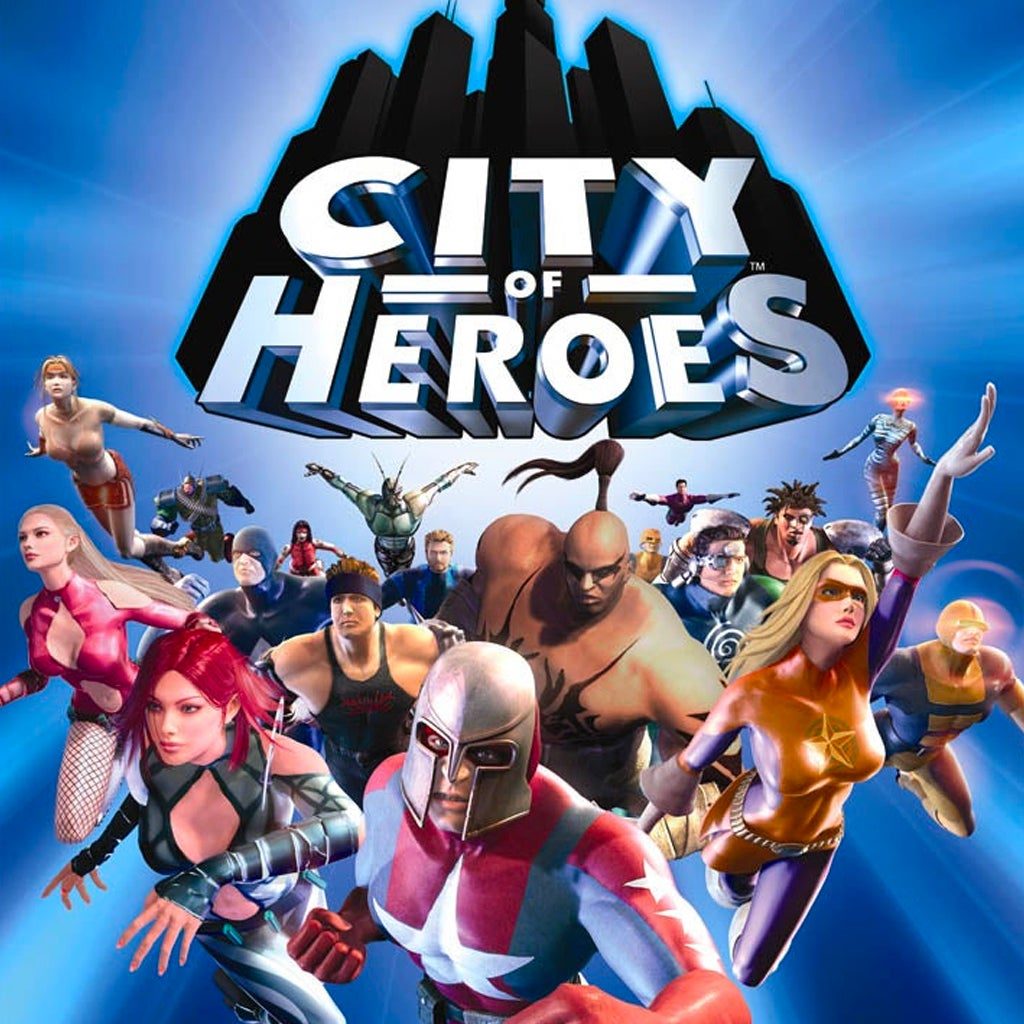City of Heroes was the first spandex wearing MMO (Massively Multiplayer Online game). Released in 2004, a solid 6 months before World of Warcraft, it was a major departure from the fantasy themes of other games at the time with an onslaught of unique power selections and gameplay that allowed players much more control. While City of Heroes went offline in 2012, it has lived on in the minds of many gamers.
In this series we are going to look at power themes within City of Heroes, and the City of Villains expansion, and see what those might look like recreated in Metahumans Rising. Our first set of articles will focus on the themes that rolled across the different character archetypes (like classes in other RPGs). Later we might put together specific builds, but with as many power sets as the game had, that can shoot into the stratosphere for the number of articles. So, let’s start with something more manageable.
Raising the City
What is a power set though? Each character in City of Heroes would select a primary and secondary power set, these made up the overall theme of the hero, or villain. A cold themed character might select the Blaster Archetype, high damage but lacking defenses, with the Ice Blast and Ice Manipulation power sets. Alternatively, they might be a Tank, ready to suck up damage with Ice Armor and Ice Melee. Each power set consisted of 9 related powers that one would click, toggle, or just have running automatically in the background.
Now, Metahumans Rising is set up very differently. Metahumans Rising allows players to create an all inclusive power that is multifaceted. Translations are not going to be one to one. Instead each translation will take the overall theme of the power, calling out the neat tricks of a given set.
Additionally, Metahumans Rising doesn’t enforce anything resembling a class system as heroes often have an inexhaustible number tricks up their sleeves, instead players decide where to focus their character. While Metahumans Rising doesn’t focus on character roles, each article will give suggestions on how to focus the power towards the signature archetypes.
Archetypes In Metahumans Rising
Before getting into the City of Heroes powers themselves, let’s take a deeper look at the archetypes. In addition to their power selections, each archetype in City of Heroes possesses inherent abilities that help sharpen their focus in their given role. Today’s article will focus on bringing those bonuses to the table.
Blaster
Ranged damage specialists, Blasters pack a wallop but need to avoid being hit as they lack strong defensive capabilities.
Abilities: Defiance & Aim
Defiance is an inherent power that provides a damage boost, and allows the character to act while under effects such as Hold or Sleep. Aim is a power that all Blasters can select to increase their accuracy and, as you might have guessed, Damage.
To represent these abilities in Metahumans Rising, heroes should select the Fitness Talent, offering protection from Staggering Attacks, they may also take Law to resist Control powers. For the Damage increase Fitness Supports Heavy Blow allows the hero to add extra oomph to their blasts. They can also take a Specialty for Heavy Blow representing their increased Accuracy.
Brute
Powerful melee opponents, Brutes were a later addition with the City of Villains expansion and are similar to the Scrapper in their role. However, they lack the pure damage output of a Scrapper, instead gaining increased damage as battles progress.
Abilities: Fury & Taunt
Fury, as mentioned, increases the Brute’s damage the more they attack. The longer they stay in a fight, the more devastating they become. Taunt allows them to draw attention to them, forcing foes to target the Brute primarily.
Starting with Taunt, take the Provoke talent. It’s virtually a 1:1 translation. Fury is a bit trickier, it doesn’t care if you connect, it only cares that you are fighting. To address this start with the Discipline Talent, then add the following Specialties to the Brute’s power.
- (S) Bruised: Applies once the hero reaches 0 Stamina.
- (S) Engaged: Applies once the hero has Attacked 3 or more times.
- (S) Unhinged: Applies once the hero has used their Discipline Talent.
Each Specialty has its own unique trigger, and allows them to become progressively more powerful as each condition is met. Finally, it might go without saying but taking Surprising Boon allows the Brute to come into Turn two with Engaged activated if they opt to take a third action the first Turn.
Controller
This archetype does what it says on the tin. They are the masters of control, locking down foes, manipulating the battlefield and all around giving other players an edge.
Abilities: Containment & Overpower
Containment offers bonus damage to any target that was held, sleeping, or disoriented. Overpower on the other hand increased their ability to hold, sleep, or disorient foes. While Controllers were seen as a low damage archetype, that doesn’t mean they didn’t have some fun tricks to mitigate that.
Reversing the order, let’s begin with Overpower. This can easily be replicated with a Specialty for these actions, such as (S) Trapping Attacks, or (S) Stagger. Conversely, Containment is handled for when targets are under these effects, (S) Trapped Foes, or (S) Staggered Foes.
Corruptor
A villainous archetype, the corruptor focuses on ranged damage and support as a dark mirror to the Defender.
Ability: Scourge
Foes with less than 50% health may take double damage from Corruptor attacks.
Translating this to Metahumans Rising, we will modify one of the Brute Specialties. (S) Bruised becomes (S) Breaker, applying once the target reaches 0 Stamina or has been reduced by one Mob Size (i.e. Major Mob to Typical, Typical to Minor). Because this ability does not require a lot of extra work, heroes may want to select a Talent to Support Scourge as well, which makes Heavy Blows to weakened targets easier.

